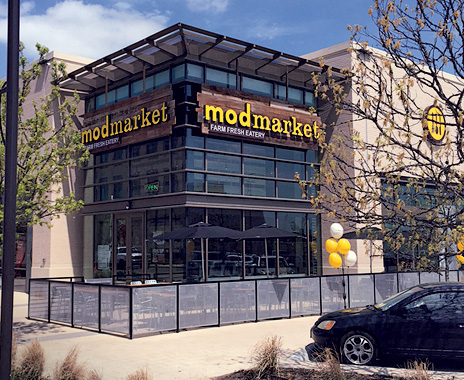Before opening their doors to a new location or even new market, quick-serve and fast-casual operators must find that special real estate and then negotiate a lease that will ensure them the coveted spot.
According to Falcon Realty Advisors, whose clients include fast casuals Modern Market, Hopdoddy Burger Bar, and Velvet Taco, a lease agreement should ideally make up 6–8 percent of a location’s operating budget. The space itself affects leasing costs and return on investment, and various issues arise depending upon whether it’s an in-line, end-cap, standalone, or nontraditional location.
“The least-expensive and usually lowest revenue generator is the in-line space,” says Cal Marsh, director of national restaurant accounts for Falcon Realty Advisors. “Most fast casuals and most full-service [operators] don’t do in-line spaces because you sort of get lost in the storefront, and they generally don’t have a patio opportunity.” He adds that costs for coveted food-court or mall locations can account for up to 15–19 percent of an operating budget.
Marsh says he always advises clients to procure the space that works best for them physically and economically. Most of the concepts he has worked with are willing to pay for a space that better fits their needs.
Restaurants typically cost $500–$600 per square foot to build out, Marsh says, and leases are usually 10 years to start, with the option for five-year extensions. “You’re not going to take a corner or end-cap that’s mediocre knowing that you’re going to be stuck there for 20 years,” he says.
Making a decision on more expensive real estate hinges upon what value it will bring to the brand.
“When we go into a new market or territory to introduce and launch the brand, we do that value-proposition equation to see if it makes sense,” says Jeff Chandler, CEO of Hopdoddy Burger Bar. “Most of the time that should translate into higher sales, but not all the time. Our units operate at a maximum capacity most of the time, so we may not see that much more in sales.”
By planting its stake in a new market in an area of high visibility and foot traffic, Chandler says, the Austin, Texas–based burger company can further establish its brand.
Other operators are also doing the math before taking the plunge. Italian chain Fazoli’s uses a tool from an analytics consultancy to determine the best fit. Fazoli’s director of real estate and the brand’s broker can type in a promising address while in the field and receive potential sales numbers.
“Everything goes into a return-on-investment model, so it’s got to work within the confines of your investment model,” says Carl Howard, CEO of Fazoli’s. “I would say there’s a certain point in time when it doesn’t make sense to put too much money into real estate because it may hinder other growth. If I’m spending three times the amount to open one location, maybe I could’ve opened three other ones.”
In Fazoli’s early days, when capital was harder to come by, the brand looked for landlords to do much of the build-out, Howard says. The Kentucky-based brand spent $600,000 to open, including soft costs. He says the landlord did a lot of the work, including installing ceiling tiles.
Other brands use other criteria to search and select for ideal real estate and feasible lease agreements. Part of this requires looking beyond the concrete numbers and to market potential. Chandler says Hopdoddy’s concept dictates where the brand goes next. The chain’s roots are firmly embedded in downtown Austin, Texas, where a funky, urban vibe with high foot traffic prevails.
When a chain expands within an existing market, there is inherently less risk. Colorado-based Modern Market will invest more in an established trade area.
“If it’s a trade area where there’s proven human traffic already, those are the best ones to pay up for, because you kind of have a predictor of the customer pattern at least,” says Anthony Pigliacampo, co-CEO of Modern Market.
Falcon Realty’s Marsh says that once his clients have found an attractive space, they receive a proposal from the landlord and then negotiate a letter of intent (loi), which can vary from one to 19 pages, depending upon the level of detail.
“Get more details upfront so that once the LOI is negotiated completely, you turn it over to the attorneys,” he says. “There’s less chance that the deal will blow up in lease negotiations if you’ve got a good, detailed letter of intent.”
Comments then fly back and forth between attorneys until an acceptable final draft emerges. Chandler says Hopdoddy has certain parameters in its decision-making process when it comes to leases. Cost considerations are part of it, but so are the terms and conditions outlined in the LOI.
“The different critical junctures for us are what we call a ‘preliminary site approval,’” he says. “Is it the right space? Does it fit what we want? Does it have the general deal terms that provide the ROI? Do we think that the sales are going to allow us and afford us to get that ROI?”
At Modern Market, Pigliacampo says, the process has become more streamlined over the years. He has even figured out a winning strategy to vet potential landlords.
“The most difficult ones are the one-off guys that own this random building somewhere, and they tend to take a little longer,” he says. “With larger landlords, we know what to expect, they know what we’re going to ask for, and we can pretty quickly triangulate on everything getting done.”












